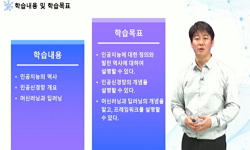Cybercriminals constantly produce and use slang by adding criminal meanings to existing words or replacing them with similar words for communication. Continuous monitoring and manual work are required to respond to this, and a large amount of labeled ...
http://chineseinput.net/에서 pinyin(병음)방식으로 중국어를 변환할 수 있습니다.
변환된 중국어를 복사하여 사용하시면 됩니다.
- 中文 을 입력하시려면 zhongwen을 입력하시고 space를누르시면됩니다.
- 北京 을 입력하시려면 beijing을 입력하시고 space를 누르시면 됩니다.

계층적인 잠재 표현 기반의 사이버 범죄 신조어 자동 탐지 프레임워크 = Hierarchical Latent Representation-based Framework for Automatic Detection of Cybercrime Slang
한글로보기https://www.riss.kr/link?id=A108873566
- 저자
- 발행기관
- 학술지명
- 권호사항
-
발행연도
2023
-
작성언어
Korean
-
주제어
cybercrime ; neologism detection ; autoencoder ; latent vector ; hierarchical similarity ; framework ; 사이버 범죄 ; 신조어 탐지 ; 오토인코더 ; 잠재 벡터 ; 계층적인 유사도 ; 프레임워크
-
등재정보
KCI우수등재
-
자료형태
학술저널
- 발행기관 URL
-
수록면
1121-1130(10쪽)
- DOI식별코드
- 제공처
-
0
상세조회 -
0
다운로드
부가정보
다국어 초록 (Multilingual Abstract)
Cybercriminals constantly produce and use slang by adding criminal meanings to existing words or replacing them with similar words for communication. Continuous monitoring and manual work are required to respond to this, and a large amount of labeled training data is required when using deep learning. However, the ability to collect a large amount of training data is limited because direct labeling by a person requires a lot of time and money and proceeds secretly due to the nature of cybercrime. Thus, we develop a framework based on an autoencoder and propose a method to effectively detect contextual cybercrime slang and neologisms through hierarchical latent vector similarity comparisons to address these limitations. Experiments using a cybercrime post dataset showed that the framework had an accuracy of up to 99.1% at a similarity threshold of 0.5.
참고문헌 (Reference)
1 박준영 ; 채명수 ; 정성관, "실시간 범죄 예측을 위한 랜덤포레스트 알고리즘 기반의 범죄 유형 분류모델 및 모니터링 인터페이스 디자인 요소 제안" 한국정보과학회 22 (22): 455-460, 2016
2 문현지 ; 박현민 ; 김기범, "보이스피싱 범죄조직의 은어 사용과 AI 기술을 적용한 수사상 활용방안 연구" 경찰대학 21 (21): 137-160, 2021
3 L. Cheng, "Unsupervised Cyberbullying Detection via Time-Informed Gaussian Mixture Model"
4 L. Ranaldi, "THE DARK SIDE OF THE LANGUAGE : PRE-TRAINED TRANSFORMERS IN THE DARKNET"
5 P. Vincent, "Stacked Denoising Autoencoders : Learning Useful Representations in a Deep Network with a Local Denoising Criterion" 11 (11): 3371-3408, 2010
6 "Smart Policing Big Data Platform"
7 "Smart Policing Big Data Platform"
8 "Smart Policing Big Data Platform"
9 "Smart Policing Big Data Platform"
10 최은정 ; 이수련 ; 권혜민 ; 김명주 ; 이인수 ; 이승훈, "SNS 빅데이터 및 검색포털 트렌드와 마약류 사건 통계간의 비교 및 의미분석 연구" 한국디지털정책학회 19 (19): 231-238, 2021
1 박준영 ; 채명수 ; 정성관, "실시간 범죄 예측을 위한 랜덤포레스트 알고리즘 기반의 범죄 유형 분류모델 및 모니터링 인터페이스 디자인 요소 제안" 한국정보과학회 22 (22): 455-460, 2016
2 문현지 ; 박현민 ; 김기범, "보이스피싱 범죄조직의 은어 사용과 AI 기술을 적용한 수사상 활용방안 연구" 경찰대학 21 (21): 137-160, 2021
3 L. Cheng, "Unsupervised Cyberbullying Detection via Time-Informed Gaussian Mixture Model"
4 L. Ranaldi, "THE DARK SIDE OF THE LANGUAGE : PRE-TRAINED TRANSFORMERS IN THE DARKNET"
5 P. Vincent, "Stacked Denoising Autoencoders : Learning Useful Representations in a Deep Network with a Local Denoising Criterion" 11 (11): 3371-3408, 2010
6 "Smart Policing Big Data Platform"
7 "Smart Policing Big Data Platform"
8 "Smart Policing Big Data Platform"
9 "Smart Policing Big Data Platform"
10 최은정 ; 이수련 ; 권혜민 ; 김명주 ; 이인수 ; 이승훈, "SNS 빅데이터 및 검색포털 트렌드와 마약류 사건 통계간의 비교 및 의미분석 연구" 한국디지털정책학회 19 (19): 231-238, 2021
11 X. Xiaofen, "SAE+ LSTM: A New framework for emotion recognition from multi channel EEG" 13 (13): 2019
12 X. Shiqiang, "Re search on Argument Text Clustering Method Based on Autoencoder" 21 (21): 181-192, 2021
13 Z. Zhao, "LSHWE : improving similarity-based word embedding with locality sensitive hashing for cyberbullying detection" 8 (8): 328-339, 2016
14 "KOREAN NATIONAL POLICE AGENCY"
15 B. Yoshuna, "Generalized Denoising Auto-Encoders as Generative Models" 26 : 2013
16 G. Pengfei, "Dual Adversarial Autoencoders for Clustering" 21 (21): 1417-1424, 2020
17 H. AL-Saif, "Detecting and Classifying Crimes from Arabic Twitter Posts using Text Mining Techniques" 9 (9): 377-387, 2018
18 A. Muneer, "Cyberbullying Detection on Social Media Using Stacking Ensemble Learning and Enhanced BERT" 14 (14): 467-, 2023
19 R. Zhao, "Cyberbullying Detection Based on Semantic-Enhanced Marginalized Denoising Auto-Encoder" 2020
20 H. Zhou, "Cross-Lingual Sentiment Classification Based on Denoising Autoencoder" 496 : 181-192, 2014
21 S. Sathyadevan, "Crime analysis and prediction using data mining" 9 (9): 406-412, 2014
22 Z. Beiji, "Crime Hotspot Detection and Monitoring Using Video Based Event Modeling and Mapping Techniques" 10 (10): 962-969, 2017
23 I. Jayaweera, "Crime Analytics : Analysis of Crimes Through Newspaper Articles" 277-282, 2015
24 W. Yasi, "Auto-encoder based dimensionality reduction" 19 : 232-242, 2016
25 D. P. Kingma, "Auto-Encoding Variational Bayes"
26 S. Lal, "Analysis and Classification of Crime Tweets" 167 : 1911-1919, 2022
27 K. Zahra, "Analysis and Classification of Crime Tweets" 11-16, 2018
28 A. Makhzani, "Adversarial Autoencoders"
29 "AIHub"
30 L. Ruizhe, "A stable variational autoencoder for text modelling" 13 (13): 594-599, 2019
31 G. Deepak, "A knowledge centric hybridized approach for crime classification incorporating deep bi-LSTM neural network" 80 (80): 28061-28085, 2021
32 K. B. Sundhara Kumar, "A Novel Hybrid RNN-ELM Architecture for Crime Classification" 876-882, 2020
33 E. A. Emon, "A Deep Learning Approach to Detect Abusive Bengali Text" 1-5, 2019
34 B. Kim, "2022 Drug Crime White Paper" Supreme (Public) Prosecutors' Office 4-, 2023
동일학술지(권/호) 다른 논문
-
비디오 프레임 선택을 통한 주거 공간 인간 행동 인식 모델 경량화 방안 제안
- 한국정보과학회
- 김소현
- 2023
- KCI우수등재
-
ELM 알고리즘을 이용한 팔굽혀펴기 행동의 방향별 동작 인식률에 관한 비교 분석
- 한국정보과학회
- 김상웅
- 2023
- KCI우수등재
-
메신저 데이터 저자 프로파일링을 위한 한국어 구어체 텍스트 기반 성별 분류 모델
- 한국정보과학회
- 강지혜
- 2023
- KCI우수등재
-
- 한국정보과학회
- 홍용기
- 2023
- KCI우수등재




 DBpia
DBpia






